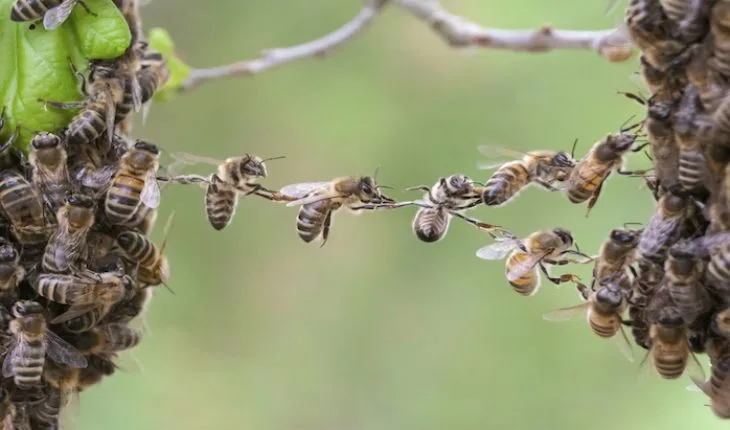“To give away money is an easy matter and in any man’s power. But to decide to whom to give it and how large and when, and for what purpose and how, is neither in every man’s power nor an easy matter”. Aristotle
It never fails to amaze me that those in search of funding have so much difficulty finding donors or investors in search of projects to fund.
In the field of healthcare, there are so many family foundations and charitable trusts set up to fund research and drug development for a whole raft of illnesses. However, it seems that we are all working incredibly hard but perhaps not accessing funds that are already available. Is it because we don’t speak the same language or is it perhaps because we all work in silos and don’t take the time to view the wider picture? Maybe we don’t have the time to build relationships with those who could make our work so much more valuable. But unless we change the way we think about funding for medical research and drug development neither funder/investor nor research scientist will forge a marriage made in heaven.
The Lyla Nsouli Foundation was founded after Lyla died from Diffuse Intrinsic Pontine Glioma. Many such foundations are created in memory of a family member. Most of them do good work. Some of them do great work. But a couple of things differentiate us from others – Nadim Nsouli, our Chairman, is a former investment banker so his view of ROI is different from most charity managers. And we have one sole objective – to find a cure for DIPG as quickly as possible. It should be simple but it isn’t.
Not a lot has progressed in the past 30 years where DIPG is concerned. So, for us, doing the same old same old isn’t an option. We are prepared to look at things differently. We are only really interested in finding a pill or a potion – much as we respect the work of the traditional research scientist, for DIPG things are urgent.
You may be shocked to know that we made very few grants last year and that is because we had very few grant applications, and of the ones we had, only a few of them were worthy of consideration. In the same field, another major funder of brain tumour research finds their grant budget is wildly underspent for exactly the same reason. The more I talk to other similar organisations the more I hear the same thing. I’ve put a lot of time and effort into working out why this is so, and almost accidentally I learned something that is quite illuminating – leukaemia is heavily research funded despite making massive inroads over the past 30 years. The survival rate is very high (82% estimated) but still millions pour into leukaemia research. And when I questioned why this was so it transpires that those involved in leukaemia research have learned how to communicate with donors and investors. They have learned how to pitch! Whether in writing or verbally they know how to hit the right notes.
In a world where venture capitalists and institutional investors make huge demands on any project they have invested in, why are charitable donors not more attractive to scientists? Our business is giving money away to people who are working on research that can make a difference to DIPG. We want to learn about your work, we want to know what you are doing and we want to fund it as long as it contributes to finding a cure for DIPG.
Recently there was a large gathering in the House of Commons on funding for brain tumour research – it was scheduled to last for an hour but in fact lasted three! But no amount of talk can change the fact that for the government to find funding for research into brain tumours then some other research budget will be cut. Philanthropy can do things that government can’t or won’t do. Bold innovative projects that need funding at the earliest stages or when you are just getting to the crunch point appeal to philanthropists. Philanthropy is uniquely positioned to take risks. Science and philanthropy are changing and share the common goal of providing society with enlightenment, with hope that in the future diseases which devastate families will become a thing of the past. We need to forge an alliance between philanthropy and science.
But there is a long way to go to “Bridge the Gap”. There is a real language problem with scientists and philanthropists. We want to fund research but you need to speak to us in a way that is meaningful. What is second nature to you might be baffling to us. If we don’t understand it, we’re unlikely to fund it.
So, if I could make one recommendation it would be to invest in getting proper training in how to pitch to philanthropists, be they individuals or Foundations. I have spent most of my career in the charity sector and I have personally raised millions for the most diverse of causes. The fundamental rule is that you must know who you are pitching to. It is quite usual for fundraisers to have large files all containing profiles of prospective donors. In those profile files, I will have amassed as much information about my prospect as possible – everything from his or her alma mater, favourite sports, any illnesses that the family have suffered from and basically right down to what my prospect eats for breakfast. Just look at the philanthropy section of the Rich List and you will see why you must know the detail. Most of those on the list have made their money through entrepreneurial efforts so they know about risk-taking; they know about how much blood, sweat, tears…….and money…………goes into making an idea work. So it’s not unreasonable that they will want to get involved in backing research work that will make a difference to society. When one reaches that stage in one’s life there is no doubt that Maslow’s hierarchy of needs is spot on – as scientists or clinicians looking for investment you can deliver their need for creativity, problem-solving, self-esteem, confidence and the respect of others. Be pragmatic. Most big charitable gestures have some payback to the donor – you just have to find out what makes them tick.
So, let’s say you want to raise research funds from the Lyla Nsouli Foundation and you come to see me. Firstly, rather than telling me what you are doing, tell me how what you are doing will impact on DIPG. There has to be a clear relationship between what you want funding for and DIPG. Explain it to me in a way that I will understand. Back your request up with information – business plan, timelines, other donors, other approaches. Always, always, remember that the information will be checked. If you are pitching to multiple prospects it’s a good idea to make that clear. You may be asked who else you are pitching to. If you have broken down your funding request into tranches and you are going to a variety of investors then make it clear what each element is for.
If you come to see us with a pitch that will have a bearing on DIPG then you have a good chance that we will agree to accept a formal proposal. This is the standard application with all the protocols, costings, biosketches etc. We are unusual in that we try and give a first indication within a month. If our scientific advisory panel – who actually make the decision on the grant – have questions then you will have an opportunity to respond and/or amend a part of the bid. And if we decide to fund we try and have contracts signed and funding delivered within 2 months. As I said, we are all about a cure.
If you are approaching a Foundation or an individual philanthropist then you need to have a very clear case for support. Why should they fund you? What do you know about them that would indicate they are interested in your work? What do you know about their family that would have a bearing on your request? Make sure you demonstrate that you have researched them and that you are offering them an opportunity to do something exciting: for them, for mankind, for science. Make sure you know the value of gifts or research they have funded in the past. And be prepared to discuss how philanthropy can work with investment to make things happen. It’s the charitable giving that can scale up a project and it can also help leverage additional types of funding. It’s time to think of the end; not the means. If you have done your research; if you have planned your pitch; if you rehearsed it until you can make your arguments in your sleep then you should be able to go in there and deliver. Knowing as much about that person as you possibly can, will mean that you know whether to get in slowly or cut to the chase from the start. However much time you have you need to use it wisely and you need to be ready to alter your approach if circumstances change.
And of course, don’t forget you have to ask. Straight out. Then stop. It will be the longest 15 seconds of your life. Be prepared for all responses; and be prepared to get as much information as possible. Especially the negative ones. You will learn a great deal from that. In a world where charities are getting clobbered every day for their behaviour and for not making a sufficiently significant contribution to society one of the few means we have to demonstrate our worth is by measuring our impact. This means that we want to take those risks, we want to fund innovative research and we want to know exactly what is being achieved in a way that is meaningful to our donors. So, with philanthropic funding, your programme will be validated in many respects by impact measuring. We can, all, work together.
And what do we, or any Foundation, want in return? As a Foundation, we want to play a part in getting a cure for DIPG. We want to work alongside you and be part of the story. We want to be recognized for the funding we have given and we want to be able to report back on the progress.
It may sound mad but when we aren’t making progress in the traditional way then we have to think creatively to BRIDGE THE GAP between science, medicine and philanthropy.
Sheila Bailey
Managing Director
The Lyla Nsouli Foundation for Paediatric Brain Cancer Research
- Bridging the gap – between medicine and philanthropy - 25th May 2016






